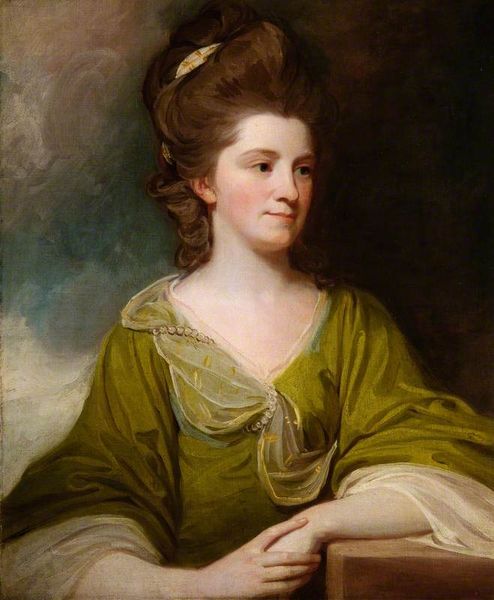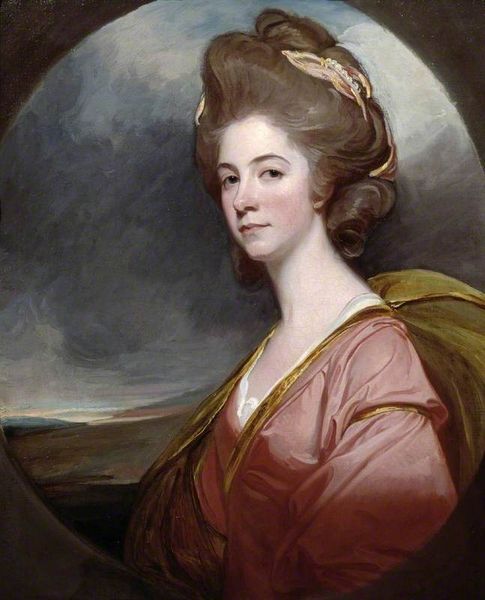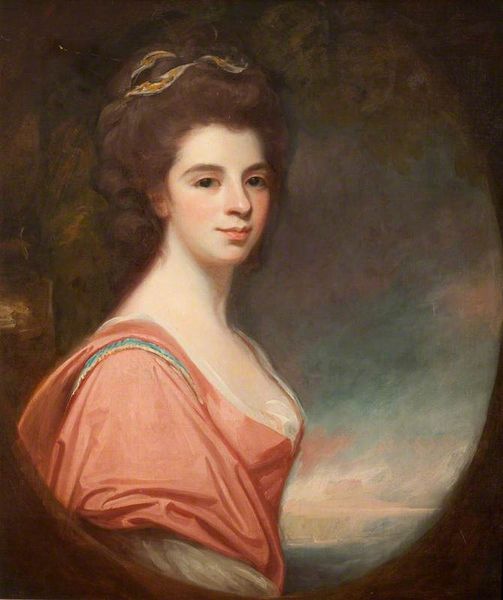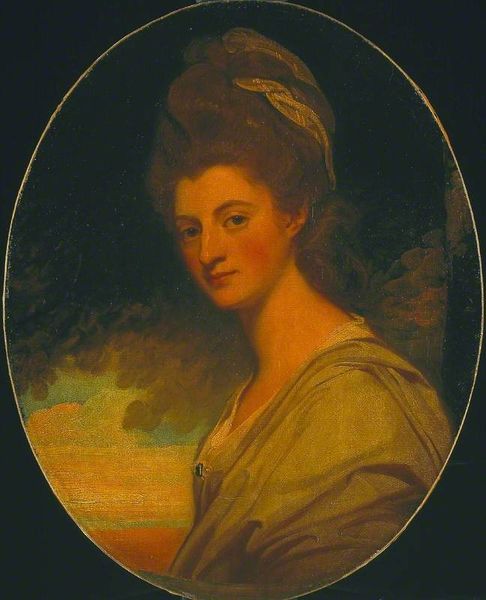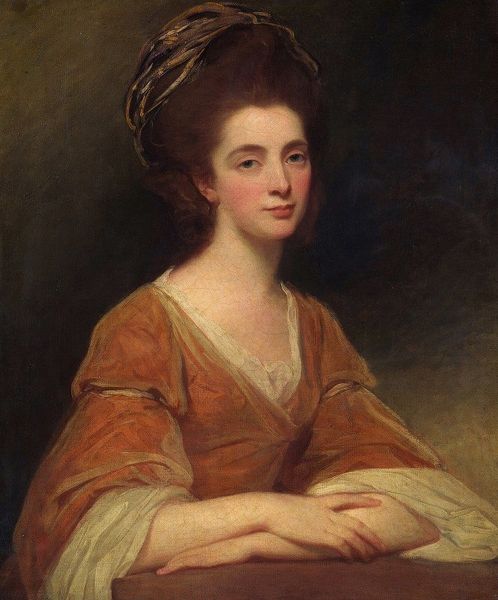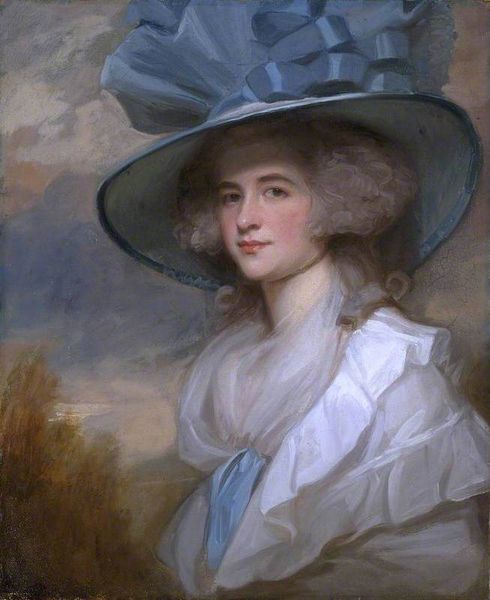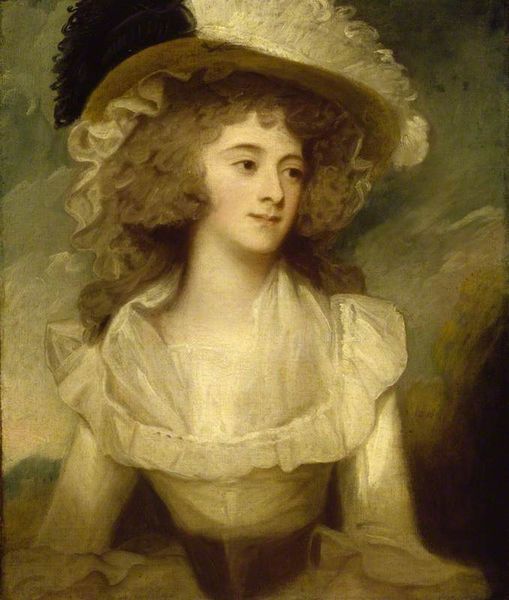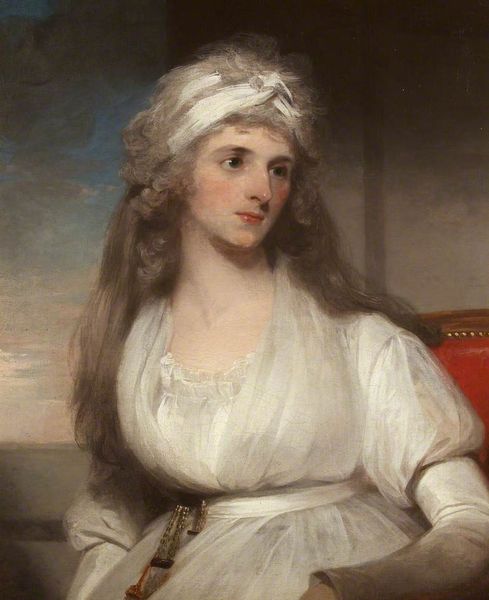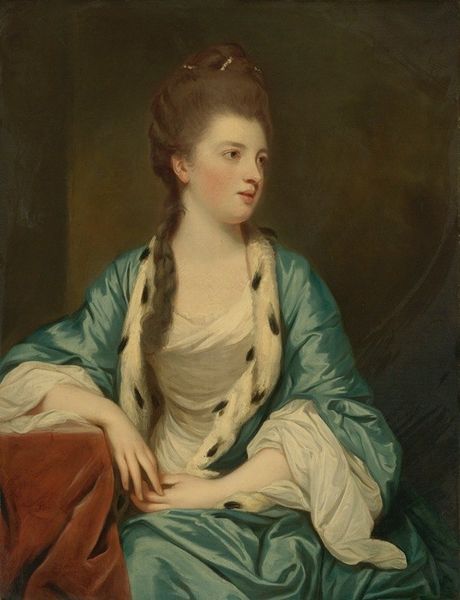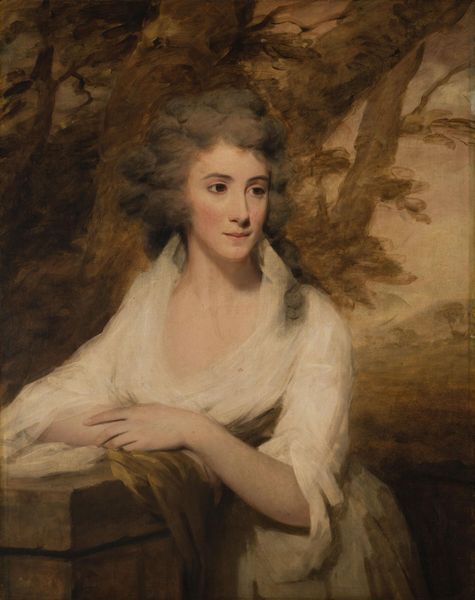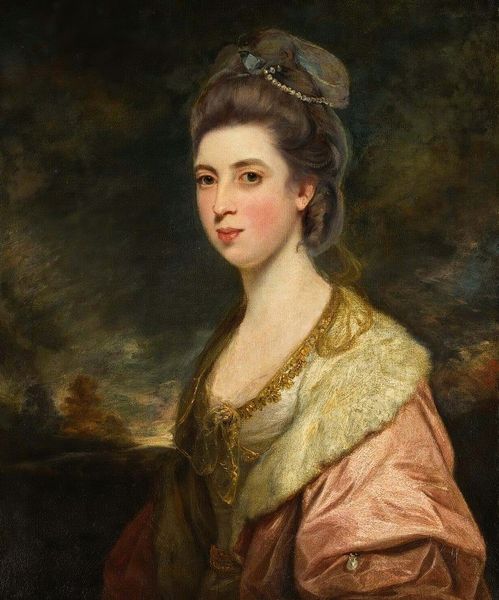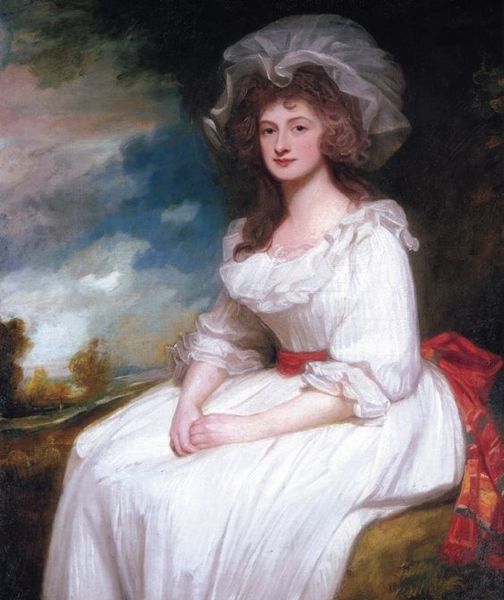
Copyright: Public domain
Curator: The luminous surface in George Romney's "Lady Elizabeth (Scot) Lindsay (1763–1858), Countess of Hardwicke" from 1782 is striking. There is a looseness that makes her feel incredibly present. Editor: It’s a captivating, rather somber painting, isn't it? There’s a wistful air about her expression, amplified by that dark, almost turbulent background. Given Romney's societal position, it's interesting how his painting departs from staid conventions in a subtle register. Curator: Yes, the subdued palette, achieved with layers of oil paint, certainly contributes to the melancholic mood. Look how he models the light on her face – there's an immediacy of touch, almost as if she were caught in a fleeting moment. That thin pearl necklace seems like a commentary on class. Editor: The placement of her hand upon what appears to be wicker work or a similar textured weave, alongside the quality of the oil paint used, raises interesting questions. The portrait comes across as less of a regal representation and more aligned with accessible and even feminine artisan practices and material economies that are often unacknowledged in artistic analyses of this period. And it was certainly produced for the consumption of an elite audience, likely to reinforce their power. Curator: Precisely. By strategically integrating the symbolism of these humble textiles, Romney gestures toward a visual vocabulary of craft to amplify the elite status of Lady Elizabeth. The materials are deliberately chosen and combined to achieve this contrast, with some serving as deliberate signifiers and material anchors for social standing. Editor: Indeed. These images, distributed and displayed, influenced perceptions and perpetuated socio-political narratives that have lasting ramifications, shaping class, beauty and status, still resonating through historical depictions. I can't help but ponder what someone in the 18th century made of this picture and the statements it reinforced. Curator: Thinking about Romney's access to such high society offers new perspectives on his process. Thank you for that. Editor: Likewise, considering your acute attentiveness to texture has given me a new view of the period's image production machine.
Comments
No comments
Be the first to comment and join the conversation on the ultimate creative platform.
